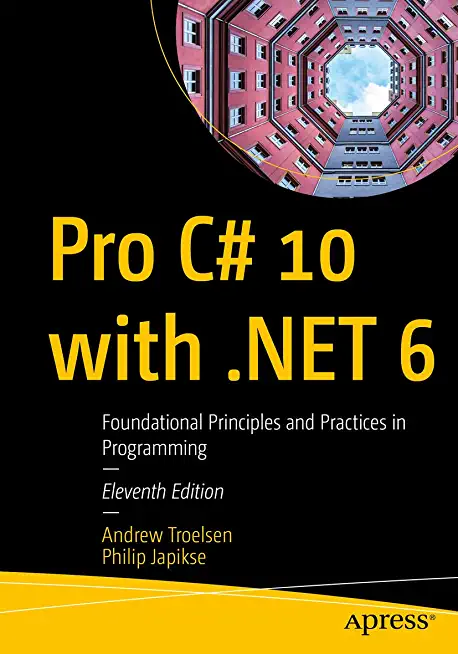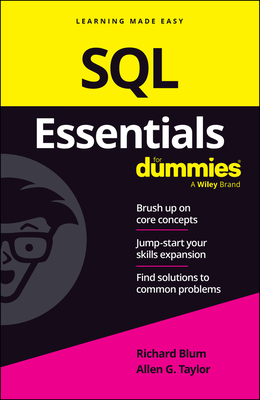VMware vSphere 6.7 Optimize, Upgrade, Troubleshoot Training in Joliet
Enroll in or hire us to teach our VMware vSphere 6.7 Optimize, Upgrade, Troubleshoot class in Joliet, Illinois by calling us @303.377.6176. Like all HSG
classes, VMware vSphere 6.7 Optimize, Upgrade, Troubleshoot may be offered either onsite or via instructor led virtual training. Consider looking at our public training schedule to see if it
is scheduled: Public Training Classes
Provided there are enough attendees, VMware vSphere 6.7 Optimize, Upgrade, Troubleshoot may be taught at one of our local training facilities.
|
We offer private customized training for groups of 3 or more attendees.
|
||
Course Description |
||
| This powerful 5-day class provides an in-depth look at vSphere 6.7. In this course, cover how to deploy vSphere 6.7, how to optimize it â?? including VMs, ESXi hosts, vCenter Server Appliance, networking and shared SAN storageâ?¦ with the goal of delivering both scalability and performance.
We show step-by-step how to upgrade or migrate to vCenter Server Appliance 6.7, how to use VMware Update Manager to upgrade ESXi hosts and how to use VUM how to upgrade VM virtual hardware.
And, we will also show you how to diagnose, isolate and fix common problems. All of vSphere Client, Host Client, Web Client and command line tools are all used to explore, configure, update, investigate and zero in on performance bottlenecks and trouble spots. Up to 45% of class time is devoted to labs so concepts, skills and best practices are developed and reinforced.
By the end of the class, attendees will have learned practical, actionable skills in vSphere design, implementation, upgrading, sizing, scalability, performance optimization and troubleshooting.
Course Length: 5 Days
Course Tuition: $3250 (US) |
||
Prerequisites |
|
| This is not a beginner level course. Attendees should have experience installing and configuring and administering vSphere 5.x or 6.x components including ESXi, vCenter server or vCenter Server Appliance. | |
Course Outline |
|
Chapter 1 – Install, Configure and Secure ESXi 6.7
Install and configure ESXi 6.7 Update 1 using Best Practices
Enable and secure command line access including the console and Secure Shell
Using Lockdown mode to restrict management access
Lockdown modes introduced in vSphere 6.7
Configure vFlash storage on ESXi
Using command line tools to review and update host configurations
Use command line tools to create/manage users and permissions
Chapter 2 – Virtual and Physical Networking
Create / update standard Virtual Switches
vSwitch security policies
Network failure detection and beaconing
Enabling Discovery Protocol settings
Use command line tools to configure/update vSwitches
Use Jumbo Frames to improve network performance
Use esxtop to monitor network activity
Chapter 3 – Advanced Networking
Configuring vSwitch Security policies, Promiscuous Mode, Forged Transmits and MAC address changes
Understanding and using Traffic Shaping
The Five physical NIC teaming policies including their pros / cons and use cases
Enabling and using Jumbo Frames for improved performance and reduced protocol overhead
Troubleshoot networking configuration and performance issues
Chapter 4 – Connecting to and Using NAS Shared Storage
Connecting to NFS v3 storage
Network design for high service availability
Best practices for performance and reliability
Chapter 5 – Virtual Hardware and Virtual Machines
VM virtual hardware, options and limits
Creating and right-sizing Virtual Machines for CPU, memory
Installing VMware Tools
Virtual Machine best practices
Import and export VMs in Open Virtual Machine Format
Implement and use vFlash Read Cache storage to accelerate VM read performance
Configure and use virtual NVMe vDisks
Chapter 6 – Upgrade, Configure vCenter Server Appliance
Deploy vCenter Server Appliance 6.0 via the command line and configuration files
Upgrade vCenter Appliance 6.0 to vCenter Appliance 6.7
vCenter deployment and redundancy options
Connecting Single Sign On (SSO) to Active Directory and other identity sources
Use command line tools to backup and restore an ESXi host’s configuration
Chapter 7 – VM Rapid Deployment using Templates, Clones
How to create a Template VM
Using Guest OS Customization for Windows and non-Windows OS'
Enabling, using Hotplug Virtual CPU and memory
Enabling, using Hotplug disks, networking, USB devices and more
Predictive and adaptive sizing strategies for VMs
Troubleshooting Virtual Machine issues
Use esxtop to analyze a VM's performance
Chapter 8 – Use VMware Update Manager to Upgrade ESXi hosts
Using command line tools to backup and restore an ESXi host’s configuration
Configure VMware Update Managers
Create ESXi host Patch Baselines
Importing a new ESXi install media image
Attaching a Host Upgrade patch baseline
Performing host compliance scans
Upgrading an ESXi host from ESXi 6.0 to ESXi 6.7
Chapter 9 – Connecting to Fibre & iSCSI Shared Storage
General SAN features and capabilities
Overview of Fibre Storage Networks
VMware APIs for Array Integration (VAAI)
Storage network design for performance and redundancy
Connecting to Fibre and iSCSI shared storage
iSCSI Hardware and Software Initiators
iSCSI Static and Send Targets LUN discovery
Troubleshooting storage issues
Use esxtop to review storage controller and datastores configuration and I/O activity
Chapter 10 – Direct VM to SAN Access with Raw Device Maps
Explain Physical and Virtual Raw Device Maps (RDMs)
Use cases for Raw Device Maps
How Raw Device Maps work with VM cold, VMotion and Storage VMotion migrations
Using RDMs to implement Virtual and Virtual/Physical Microsoft Fail Over Clusters
Chapter 11 – VMware File System (VMFS)
Unique file system properties of VMFS
Creating and managing shared Volumes
Managing VMFS capacity with LUN spanning and LUN expansion
Understand VMware multipath options
Benefits of using vendor multipath solutions
Understanding and selecting multipathing policies
VMFS performance, scalability and reliability considerations
Review storage queuing, I/O aborts and other storage issues
Diagnose and troubleshoot storage performance
VMware vSphere Flash Read Cache description and use cases
Troubleshooting VMFS issues
Use esxtop to review datastore I/O activity
Chapter 12 – Storage Profiles
SAN and user defined storage profiles
Using storage speed, replication to define storage capabilities
VMware APIs for Storage Awareness (VASA)
Creating VM storage profiles
VM/Storage compliance checks
Remediating incorrectly placed VM
Understanding Storage I/O Control
Enable priority storage queues with Storage I/O control
Chapter 13 – Storage Load Balancing with SDRS Clusters
Creating and using Storage Distributed Resource Scheduling clusters (SDRS)
Cluster properties for capacity and I/O load balancing
Best practices for building storage clusters
Chapter 14 – VMotion Migration, Cold Migration, Storage VMotion
Cold Migrations to new ESXi hosts, datastores
Hot Migrations with VMotion
VMotion requirements and dependencies
How VMotion works – detailed explanation
Troubleshooting VMotion
Storage VMotion for hot VM disk migrations
Chapter 15 – Managing ESXi Host Configurations with Host Profiles
The challenge of maintaining approved ESXi host configurations
Using Host Profiles to harvest an ESXi host configuration rule set
Updating a Host Profile rule set
Attaching a Host Profile rule set to an ESXi host and completing a compliance scan
Remediating non-compliant host configurations and verifying host configuration compliance
Chapter 16 – VMware High Availability Clusters
Minimize unplanned VM down time VMware High Availability clusters
VM requirements for HA Clusters
Storage fault recovery in High Availability clusters (All Paths Down, Permanent Device Loss)
Monitoring VM health in HA clusters
Admission Control policy settings for predictable pCPU/pRAM resource availability
Identifying and troubleshooting issues in VMware HA clusters
Chapter 17 – VMware Fault Tolerance
Eliminate VM unplanned down time with VMware Fault Tolerance
Role of the Primary and Secondary VM in a Fault Tolerance configuration
Explain how Fast Checkpointing keeps the Secondary VM vCPU, vRAM, vDisk up to date
Enabling VM Fault Tolerance
Initial VM synchronization
Testing Fault Tolerance
Chapter 18 – Distributed vSwitch Features and Scalability
Features and benefits of Distributed vSwitches
Role of the DVUplink port group
Adding ESXi hosts to dvSwitches
Creating dvSwitch port groups
Migrating physical NICs and VMkernel ports to dvSwitches
dvSwitch configuration backup and restore
Configuring custom VM MAC address generation policies
Testing dvSwitch network healt
|
Course Directory [training on all levels]
Technical Training Courses
Software engineer/architect, System Admin ... Welcome!
- .NET Classes
- Agile/Scrum Classes
- AI Classes
- Ajax Classes
- Android and iPhone Programming Classes
- Blaze Advisor Classes
- C Programming Classes
- C# Programming Classes
- C++ Programming Classes
- Cisco Classes
- Cloud Classes
- CompTIA Classes
- Crystal Reports Classes
- Design Patterns Classes
- DevOps Classes
- Foundations of Web Design & Web Authoring Classes
- Git, Jira, Wicket, Gradle, Tableau Classes
- IBM Classes
- Java Programming Classes
- JBoss Administration Classes
- JUnit, TDD, CPTC, Web Penetration Classes
- Linux Unix Classes
- Machine Learning Classes
- Microsoft Classes
- Microsoft Development Classes
- Microsoft SQL Server Classes
- Microsoft Team Foundation Server Classes
- Microsoft Windows Server Classes
- Oracle, MySQL, Cassandra, Hadoop Database Classes
- Perl Programming Classes
- Python Programming Classes
- Ruby Programming Classes
- Security Classes
- SharePoint Classes
- SOA Classes
- Tcl, Awk, Bash, Shell Classes
- UML Classes
- VMWare Classes
- Web Development Classes
- Web Services Classes
- Weblogic Administration Classes
- XML Classes
Business Training Courses
Project Managers, Business Analysts, Paralegals ... Welcome!
Upcoming Classes
Gain insight and ideas from students with different perspectives and experiences.
- RHCSA EXAM PREP
17 November, 2025 - 21 November, 2025 - Object Oriented Analysis and Design Using UML
20 October, 2025 - 24 October, 2025 - RED HAT ENTERPRISE LINUX SYSTEMS ADMIN II
8 December, 2025 - 11 December, 2025 - Python for Scientists
8 December, 2025 - 12 December, 2025 - VMware vSphere 8.0 Skill Up
27 October, 2025 - 31 October, 2025 - See our complete public course listing






